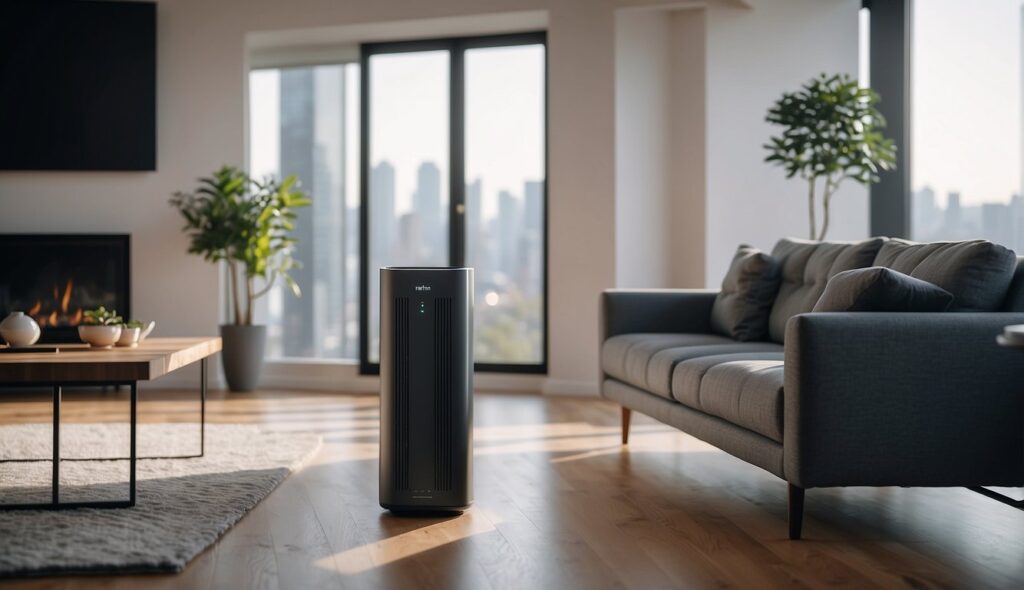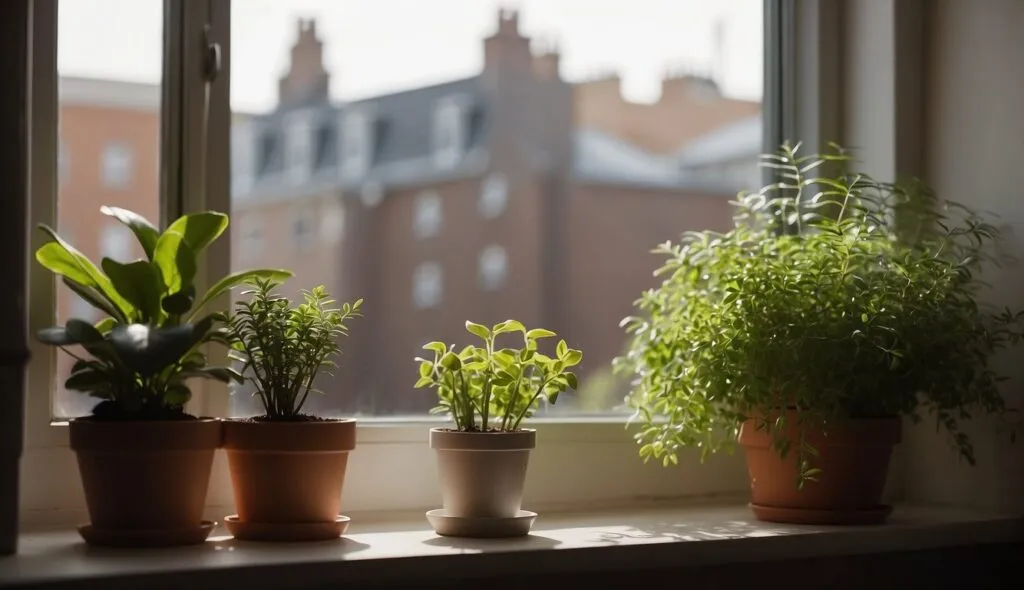Indoor air pollution is a major issue in many apartments and homes. Poor air quality can lead to a variety of health problems, including allergies, asthma, and respiratory issues. Fortunately, there are several easy and affordable solutions to improve the air quality in your apartment. One of the most effective ways to purify the air in your apartment is by adding air-purifying plants.
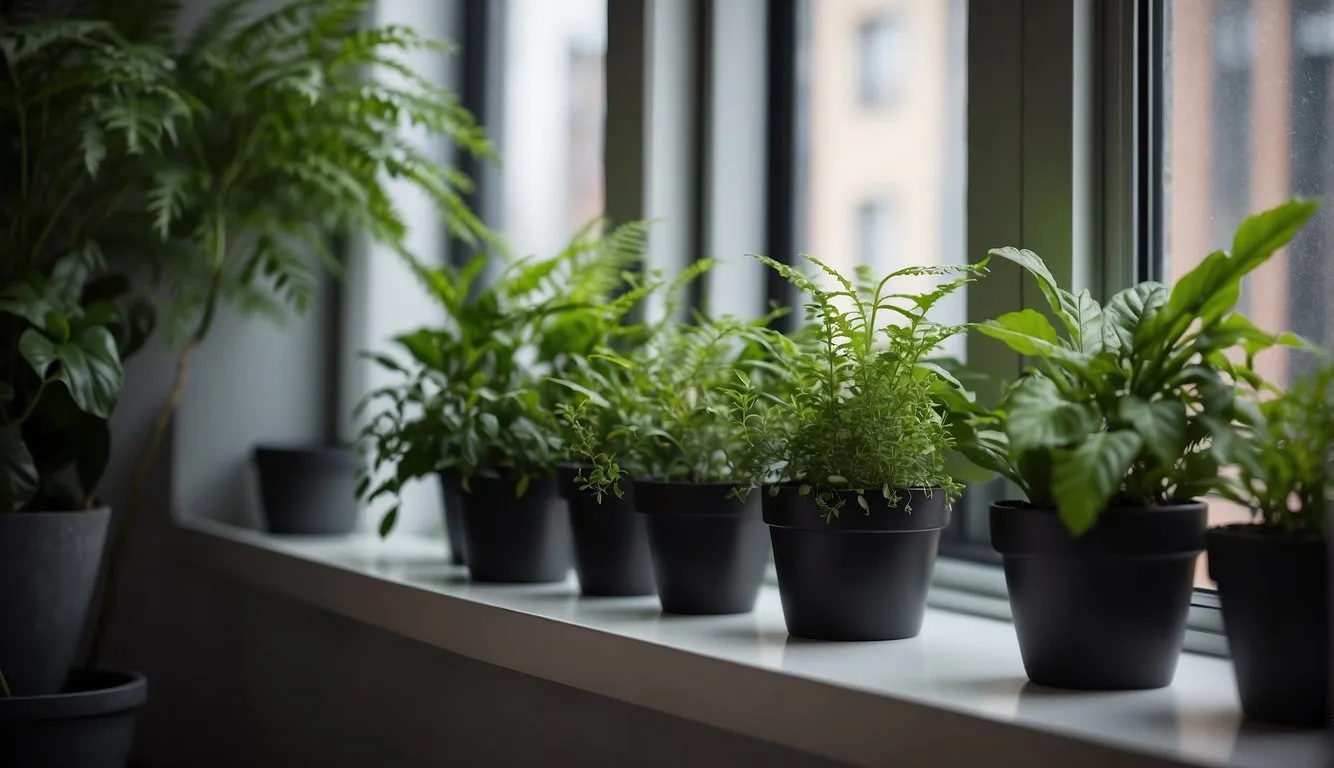
Plants are natural air purifiers and can filter out harmful toxins and pollutants from the air. They also help to increase humidity levels, which can be beneficial for those with dry skin or respiratory issues. In addition, plants can add a touch of natural beauty to your apartment and can improve your overall mood and well-being. In this article, we will explore the benefits of apartment air purifying plants, the science behind air purification, and the most popular air-purifying plants for your apartment.
Table of Contents
Key Takeaways
- Air-purifying plants are an easy and affordable way to improve the air quality in your apartment.
- Plants can filter out harmful toxins and pollutants from the air and increase humidity levels.
- Adding plants to your apartment can improve your mood and well-being while adding a touch of natural beauty.
The Science of Air Purification
When it comes to air purification, there are many different factors to consider. Pollutants such as formaldehyde, benzene, and trichloroethylene can be found in many common household items, including furniture, cleaning products, and even some types of paint. These toxins can build up in the air over time, leading to poor indoor air quality and potential health problems.
One of the most effective ways to combat indoor air pollution is through the use of air-purifying plants. According to a NASA Clean Air Study, certain plants have been shown to be effective at removing pollutants such as formaldehyde, benzene, and trichloroethylene from the air. These plants work by absorbing these toxins through their leaves and roots, and then breaking them down through a process called photosynthesis.
In addition to removing pollutants from the air, air-purifying plants can also help to increase humidity levels and produce oxygen, making them a great addition to any indoor space. However, it’s important to note that while plants can be effective at removing certain toxins from the air, they are not a replacement for other air purification methods such as air purifiers or filters.
When it comes to choosing the right air-purifying plants for your apartment, there are many different options to consider. Some of the most effective plants for removing pollutants from the air include peace lilies, spider plants, and snake plants. These plants are able to remove a wide range of toxins from the air, including formaldehyde, benzene, and toluene.
Overall, air-purifying plants can be a great way to improve indoor air quality and reduce the amount of pollutants in your apartment. By choosing the right plants and taking care of them properly, you can enjoy cleaner, healthier air in your home.
Popular Air-Purifying Plants
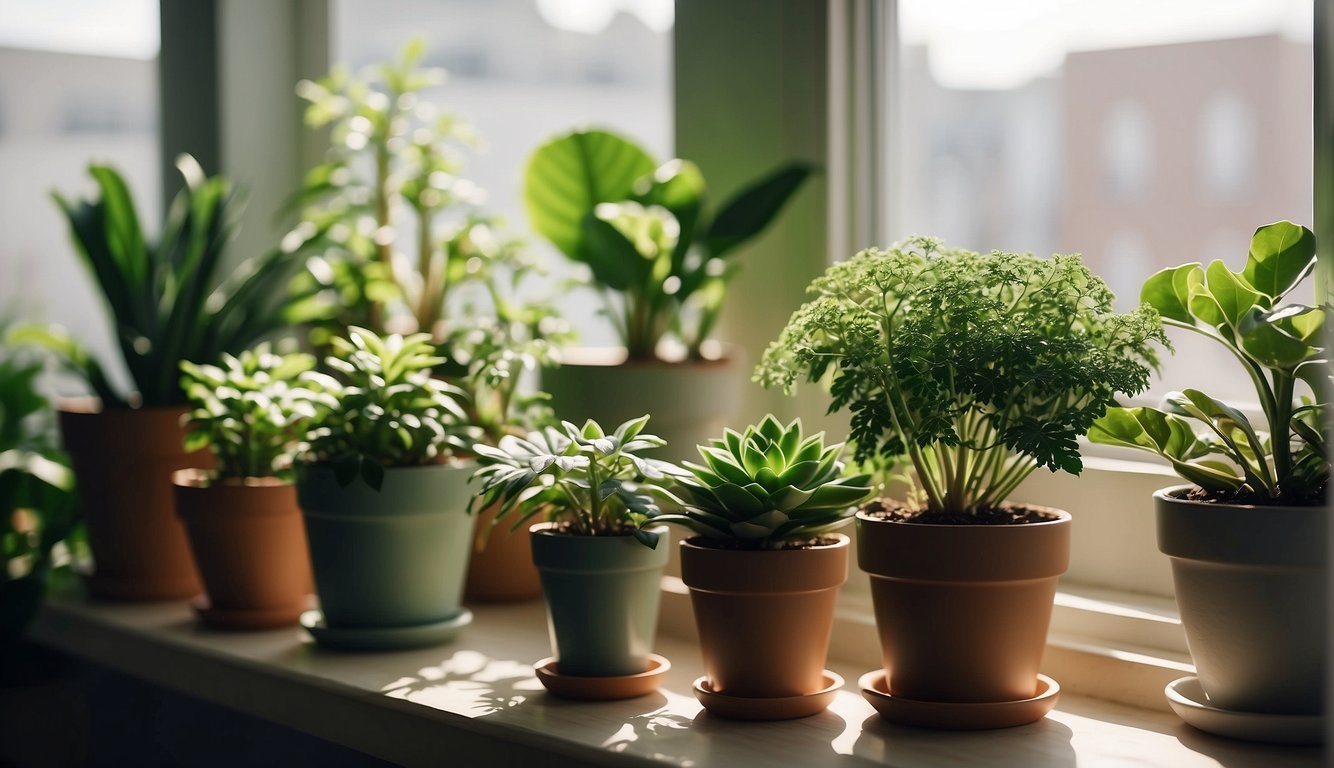
As we mentioned earlier, air purifying plants are a great way to improve the air quality in your apartment. Here are some of the most popular air-purifying plants that you can consider for your apartment:
Snake Plant
Snake plants, also known as Sansevieria, are one of the most popular air-purifying plants. They are very low maintenance and can thrive in almost any lighting condition. Snake plants are known for their ability to remove toxins such as formaldehyde, xylene, and toluene from the air. In fact, they are one of the few plants that can convert carbon dioxide into oxygen at night, making them a great choice for the bedroom.
Peace Lily
Peace lilies are another popular air-purifying plant that is easy to care for. They are known for their ability to remove toxins such as benzene, formaldehyde, and trichloroethylene from the air. Peace lilies also have the added benefit of producing beautiful white flowers, which can add a touch of elegance to your apartment.
Spider Plant
Spider plants are a great choice for those who want a low-maintenance air-purifying plant. They are known for their ability to remove toxins such as formaldehyde and xylene from the air. Spider plants are also very easy to propagate, so you can easily grow more of them if you want to.
Chinese Evergreen
Chinese evergreens are another popular air-purifying plant that is easy to care for. They are known for their ability to remove toxins such as benzene and formaldehyde from the air. Chinese evergreens also come in a variety of colors and patterns, making them a great choice if you want to add some color to your apartment.
Pothos
Pothos, also known as Devil’s Ivy, is a popular air-purifying plant that is very low maintenance. They are known for their ability to remove toxins such as benzene, formaldehyde, and xylene from the air. Pothos are also very easy to propagate, so you can easily grow more of them if you want to.
These are just a few of the most popular air-purifying plants that you can consider for your apartment. They are all low-maintenance, easy to care for, and great at removing toxins from the air. Adding these plants to your apartment can not only improve the air quality but also add some beautiful greenery to your space.
Health Benefits of Indoor Plants
As we spend most of our time indoors, it is vital to maintain good indoor air quality. Poor indoor air quality can lead to various health issues such as headaches, dizziness, and fatigue. Indoor plants can help improve air quality by removing harmful toxins and increasing oxygen levels.
Indoor plants release oxygen during photosynthesis, which can help improve air quality. They also absorb carbon dioxide, which is essential to reducing air pollution. Studies have shown that indoor plants can help reduce stress levels, improve mood, and increase productivity.
Indoor plants can also help remove harmful toxins from the air. Some common toxins found in indoor air include formaldehyde, benzene, and trichloroethylene. These toxins can be found in common household items such as furniture, cleaning products, and carpets. Certain indoor plants such as spider plants, peace lilies, and snake plants can help remove these toxins from the air.
In addition to improving air quality, indoor plants can also provide a natural and calming aesthetic to any apartment. They can be used to create a relaxing and peaceful environment, which can help reduce stress levels.
Overall, indoor plants can provide numerous health benefits, including improving air quality, reducing stress levels, and increasing productivity. Incorporating air purifying plants into your apartment can be an easy and effective way to improve your indoor air quality and overall well-being.
Optimizing Plant Placement
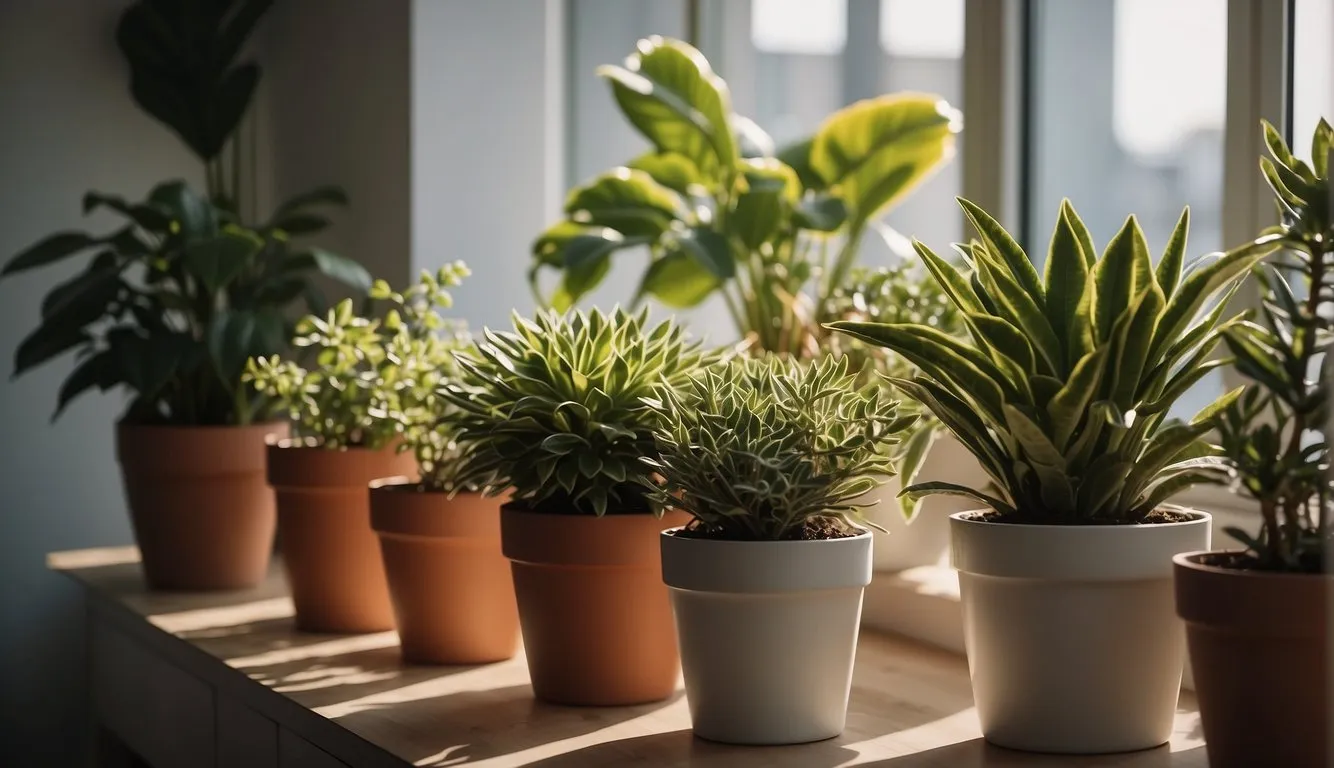
When it comes to optimizing the air-purifying abilities of your apartment plants, proper placement is key. Here are some tips for placing your plants in the areas where they will be most effective in improving your indoor environment.
Kitchens
Kitchens are a hub of activity in most apartments, and they can also be a source of indoor pollution due to cooking and cleaning activities. Placing plants in the kitchen can help to filter out pollutants and improve air quality. Some great options for kitchen placement include spider plants, peace lilies, and Boston ferns. These plants are known for their ability to remove common pollutants such as formaldehyde, benzene, and xylene.
Bathrooms
Bathrooms are another area where indoor pollutants can accumulate. Moisture from showers and baths can create the perfect environment for mold and mildew growth, which can lead to respiratory problems. Placing plants in the bathroom can help to reduce the risk of mold and mildew growth and improve air quality. Some great options for bathroom placement include aloe vera, bamboo palm, and snake plants. These plants are known for their ability to remove pollutants such as formaldehyde, benzene, and trichloroethylene.
Bedrooms
Bedrooms are where we spend a significant portion of our time, so it’s important to ensure that the air is clean and healthy. Placing plants in the bedroom can help to improve air quality and promote better sleep. Some great options for bedroom placement include lavender, jasmine, and snake plants. These plants are known for their ability to improve air quality and promote relaxation.
Overall, placing air-purifying plants in high-traffic areas such as entryways, living rooms, and kitchens can help to maximize their effectiveness. It’s also important to choose plants that are appropriate for the amount of light and humidity in each room. By following these tips, we can create a healthier indoor environment and enjoy the benefits of cleaner air.
Caring for Your Indoor Plants

Taking care of your indoor plants is essential to ensure they thrive and purify the air in your apartment. Here are some tips to help you care for your indoor plants:
Watering
Watering your indoor plants is crucial to their survival. Overwatering or underwatering can harm your plants. We recommend checking the soil moisture level before watering your plants. Stick your finger into the soil up to your knuckle, and if it feels dry, it’s time to water your plant. Be sure to use room temperature water and avoid using tap water if it’s high in minerals.
Light Requirements
Most indoor plants require bright, indirect sunlight to grow and thrive. However, some plants can tolerate low light conditions. We recommend researching the light requirements of your specific plant to ensure it’s getting the right amount of light. If your plant isn’t getting enough light, you can supplement it with artificial light.
Pet-Friendly
If you have pets, it’s essential to choose plants that are safe for them. Some plants can be toxic to pets if ingested. We recommend doing your research to ensure the plants you choose are pet-friendly. Some pet-friendly plants include spider plants, Boston ferns, and African violets.
Low-Maintenance
If you’re new to indoor gardening or don’t have a lot of time to care for your plants, low-maintenance plants are an excellent option. Some low-maintenance plants include snake plants, peace lilies, and ZZ plants. These plants require minimal watering and can tolerate low light conditions.
By following these tips, you can ensure your indoor plants are healthy and thriving, and purifying the air in your apartment.
Conclusion

In conclusion, incorporating air-purifying plants into your apartment is a great way to improve your indoor air quality. These plants are natural air purifiers that can help remove harmful pollutants from the air, such as formaldehyde, benzene, and xylene. By removing these pollutants, air-purifying plants can help reduce the risk of health problems associated with poor indoor air quality.
When choosing air-purifying plants, it is important to consider the type of plant and its specific air-purifying abilities. Some of the best air-purifying plants for apartments include Pothos, Philodendron Heartleaf, and Weeping Fig. These plants are low maintenance and can thrive in low light conditions, making them perfect for indoor environments.
While air-purifying plants can be a great addition to your apartment, it is important to note that they are not a replacement for an air purifier. Air purifiers use HEPA filters to remove pollutants from the air, while air-purifying plants work to absorb pollutants through their leaves and roots. Using both air-purifying plants and an air purifier can provide the best results for improving indoor air quality.
Overall, incorporating air-purifying plants into your apartment can be a simple and effective way to improve your indoor air quality. By reducing the levels of indoor pollutants, you can create a healthier and more comfortable living environment.
Frequently Asked Questions
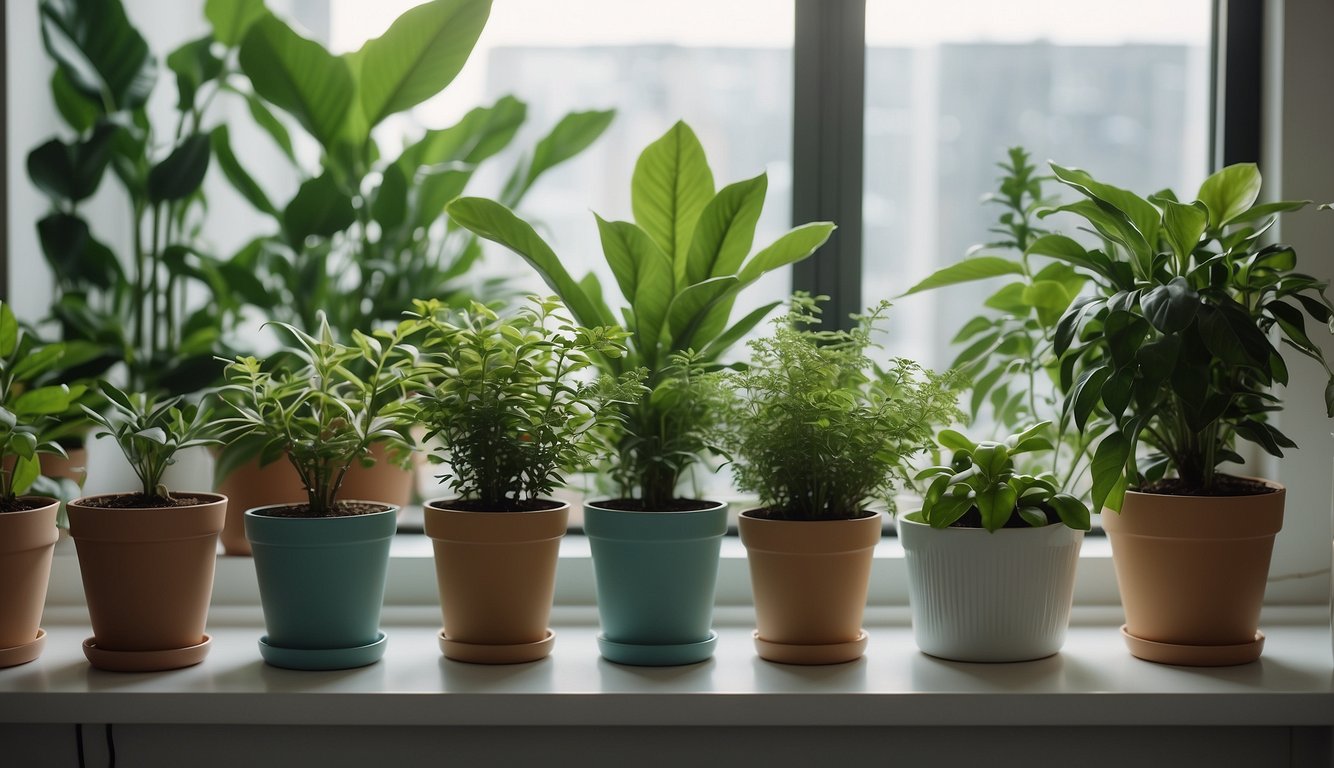
What are the best low-maintenance indoor plants for improving air quality?
Plants are natural air purifiers that can effectively remove toxins and pollutants from indoor air. If you are looking for low-maintenance indoor plants that can improve air quality, some great options include Snake Plant, Spider Plant, Peace Lily, and Aloe Vera. These plants are easy to care for and can thrive in low-light conditions.
Which plants are most effective for purifying air in low-light apartments?
If you live in an apartment with limited natural light, you can still enjoy the benefits of indoor plants that purify the air. Some of the most effective plants for purifying air in low-light apartments include Snake Plant, Spider Plant, ZZ Plant, and Peace Lily. These plants can tolerate low-light conditions and require minimal maintenance.
What are the top plants recommended by NASA for air purification?
NASA conducted a study on indoor plants and their ability to purify air. According to the study, some of the top plants recommended by NASA for air purification include Snake Plant, Spider Plant, Peace Lily, Boston Fern, and Bamboo Palm. These plants can effectively remove toxins and pollutants from indoor air, making them great choices for improving air quality in your apartment.
Can indoor plants significantly enhance air quality in small living spaces?
Yes, indoor plants can significantly enhance air quality in small living spaces. Even in small apartments, plants can help to remove harmful pollutants and toxins from indoor air. According to a study by the American Society of Horticultural Science, indoor plants can reduce the levels of carbon dioxide and other pollutants in indoor air, improving air quality and creating a healthier living environment.
Are there specific plants that are ideal for purifying air in bedrooms?
Yes, there are specific plants that are ideal for purifying air in bedrooms. Plants such as Snake Plant, Spider Plant, Peace Lily, and Aloe Vera can effectively remove toxins and pollutants from indoor air, making them great choices for bedrooms. Additionally, these plants can also help to improve sleep quality and create a more relaxing environment.
How effective are plants in removing airborne pollutants in bathroom environments?
Plants can be effective in removing airborne pollutants in bathroom environments. Bathrooms are often filled with moisture, which can lead to the growth of mold and mildew. Plants such as Spider Plant, Peace Lily, and Boston Fern can help to absorb excess moisture and remove harmful pollutants from bathroom air. However, it is important to choose plants that can tolerate low-light and high-humidity conditions.

